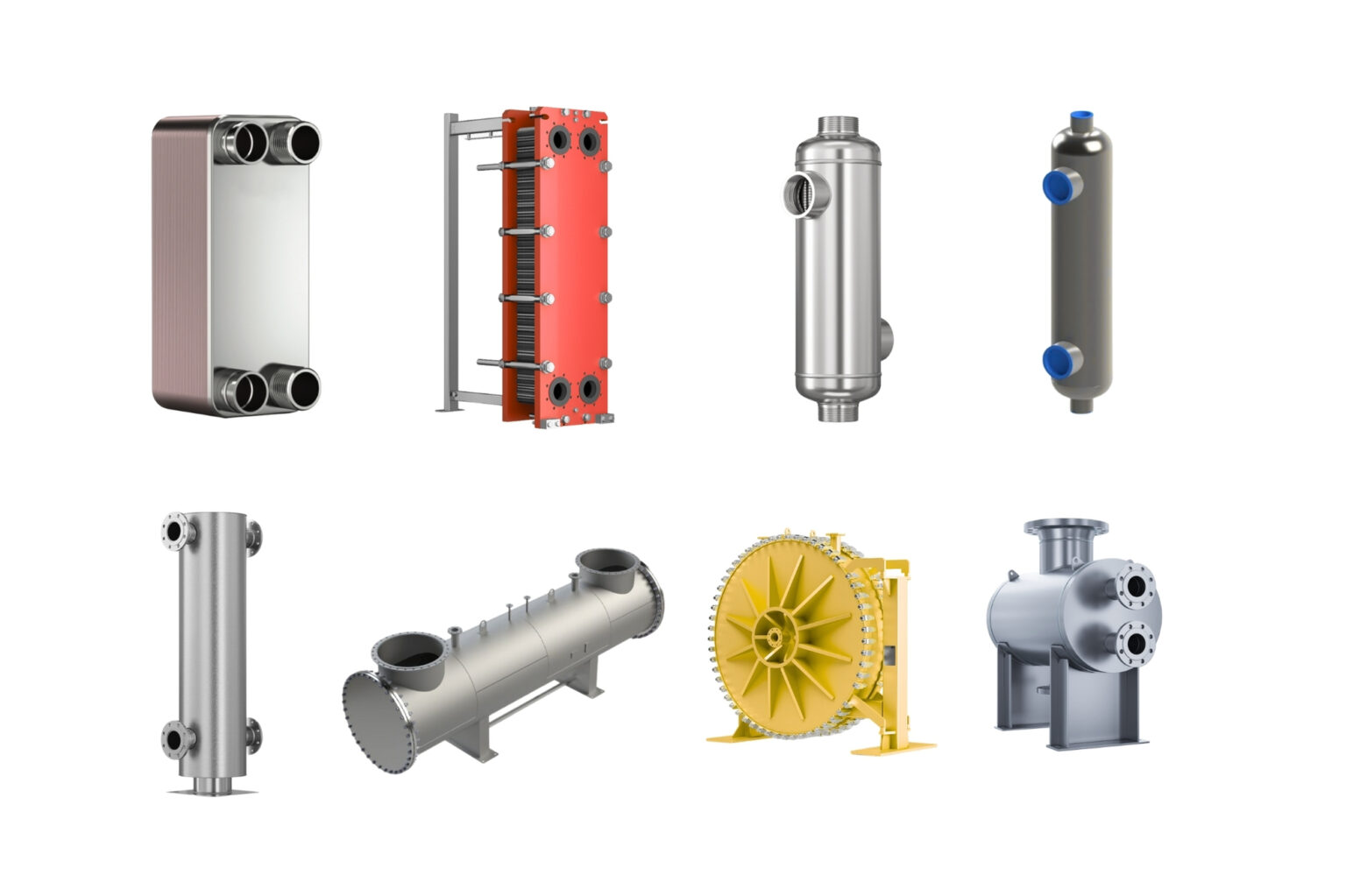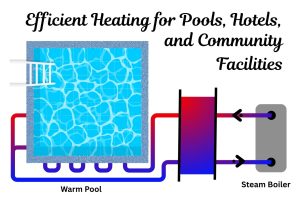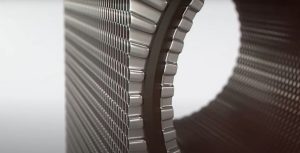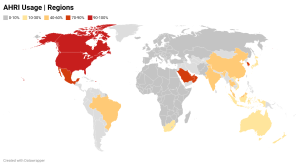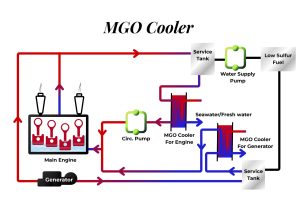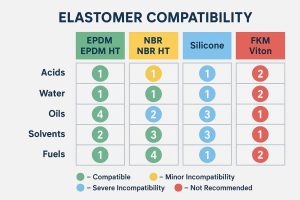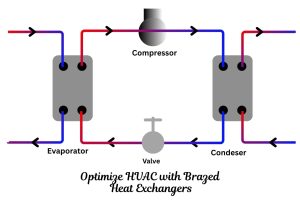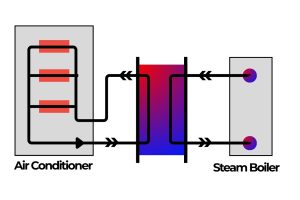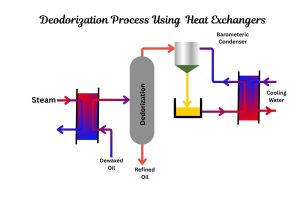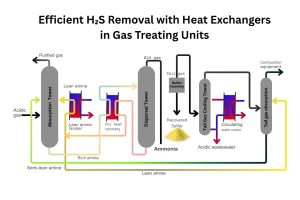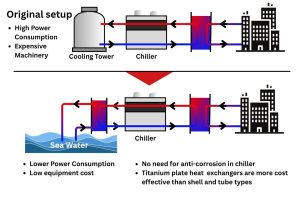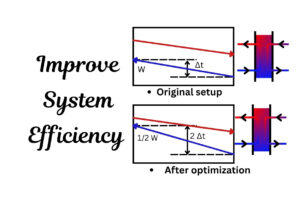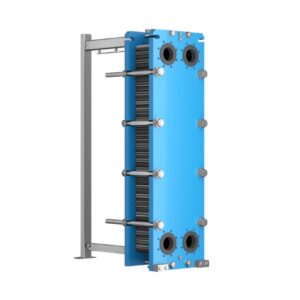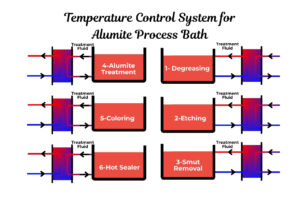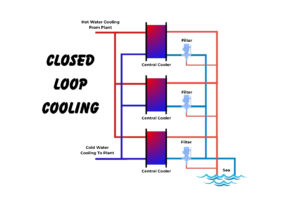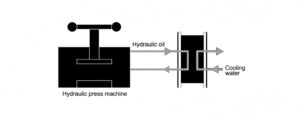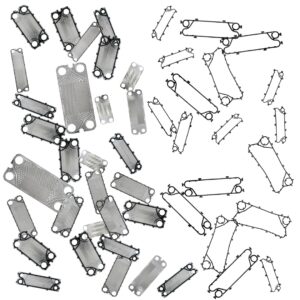What Exactly is a Heat Exchanger, and Why Does It Matter So Much?
In a world driven by efficiency and sustainability, understanding the core components of industrial processes is more critical than ever. Among these, the heat exchanger stands out as an unsung hero, quietly facilitating the transfer of thermal energy from one fluid to another without direct contact. This ingenious device is fundamental to countless operations, from keeping our homes warm to powering massive industrial plants and even ensuring the quality of the food we consume. But what is its story, and how has it evolved to become such an indispensable piece of engineering?
A Journey Through Time: How Did Heat Exchangers Come to Be?
The concept of heat exchange is as old as human curiosity about controlling temperature. Early forms of heat transfer can be traced back to ancient civilizations using rudimentary methods to warm water or air. However, the systematic engineering of devices specifically designed for efficient heat transfer began much later, truly taking shape with the advent of the Industrial Revolution. As industries grew and the need for more sophisticated thermal management became apparent, engineers and scientists began to develop more structured and efficient designs.
The 18th and 19th centuries saw the emergence of basic designs like pipe coils, which laid the groundwork for more advanced systems. The 20th century, particularly with advancements in metallurgy and fluid dynamics, propelled heat exchanger technology forward at an incredible pace. The demand for greater efficiency, reduced footprint, and improved durability across diverse applications led to the innovation of various types of heat exchangers, each tailored to specific needs and challenges. This continuous evolution has resulted in the highly specialized and robust units we rely on today.
What Are the Different Kinds of Heat Exchangers You Might Encounter?
Just as there are many different tasks requiring temperature regulation, there are various types of heat exchangers, each with unique characteristics and optimal applications. Choosing the right one is crucial for efficiency, longevity, and overall system performance.
Are Gasketed Plate Heat Exchangers (GPHEs) the Right Fit for My Needs?
Gasketed Plate Heat Exchangers, often referred to as GPHEs, are perhaps one of the most versatile and widely recognized types of heat exchangers. These modular units are designed for flexibility and ease of maintenance. They consist of a series of thin, corrugated plates pressed together, with gaskets creating separate channels for the hot and cold fluids. The corrugations on the plates are engineered to maximize turbulent flow, even at low flow rates, which significantly enhances heat transfer efficiency.
A key advantage of GPHEs is their ability to be opened for cleaning, gasket replacement, and even capacity adjustments by adding or removing plates. This makes them ideal for industries where uptime is critical and fouling (the accumulation of unwanted materials on the heat transfer surfaces) is a concern, such as in chemical processing, marine applications, and heating, ventilation, and air conditioning (HVAC) systems. Their robust design and high heat transfer coefficient, achieved through perfected flow distribution and corrugated patterns, contribute to their proven thermal performance. Many GPHEs feature unique plate designs, such as the fishbone pattern, which prevents stagnant zones and ensures an even distribution of media across the entire plate, further improving efficiency.
When considering GPHEs, it’s important to think about the materials used for the plates and gaskets, as these need to be compatible with the fluids being handled and the operating temperatures. Common plate materials include stainless steel and titanium, chosen for their corrosion resistance.
When Should I Consider Welded Block or Shell and Plate Heat Exchangers?
Beyond the gasketed plate design, other types offer distinct advantages for specific applications.
- Welded Block Heat Exchangers: These units are fully welded, making them compact and suitable for handling aggressive fluids and high temperatures without the need for gaskets. They are a durable, low-maintenance option for extreme environments like petrochemical facilities, offshore platforms, or other demanding process industries. Their robust construction ensures reliable operation where leakage is not an option and conditions are harsh.
- Shell and Plate Heat Exchangers: Representing a hybrid design, these units combine aspects of traditional shell-and-tube and plate designs. They are known for delivering high performance in a compact footprint, making them suitable for various industrial tasks. They often offer the benefits of both designs, providing a robust solution for diverse applications.
- Double-Pipe Heat Exchangers: These are among the simplest types, consisting of two concentric pipes where one fluid flows through the inner pipe and the other through the annular space between the two pipes. They are often used for applications with low flow rates and high-temperature differences. Research continues to explore ways to enhance their heat transfer capabilities, such as incorporating fins or using nanofluids, which can significantly improve their efficiency and reduce required lengths. The suitable heating or cooling process of fluids is the effective use of these heat exchangers. The use of advanced materials like water-aluminum oxide nanofluid and water-titanium dioxide can further boost their performance by increasing the convection heat transfer coefficient.
- Compact Heat Exchangers: These are characterized by their high heat transfer surface area to volume ratio, making them ideal for applications with limited space, such as in aerospace and automotive industries, oil cooling, cryogenics, and electronics cooling.
The choice among these types depends on factors such as fluid characteristics, operating pressures and temperatures, space constraints, and maintenance requirements.
How Can You Ensure Your Heat Exchanger Performs Optimally and Avoid Common Pitfalls?
Even the most robust heat exchangers can encounter issues if not properly managed. Understanding and addressing common problems is key to extending their lifespan and maintaining efficiency.
What Are the Most Frequent Problems Heat Exchangers Face?
Heat exchangers, despite their sturdy construction, are susceptible to several common issues that can hinder performance and lead to costly downtime.
- Fouling: This is arguably the most pervasive problem. Fouling refers to the accumulation of unwanted material on the heat transfer surfaces. This can include scale, sediment, corrosion products, or biological growth (biofouling). Fouling acts as an insulating layer, reducing heat transfer efficiency and increasing pressure drop across the unit. In sea water applications, for example, the adherence of marine organisms, algae, shellfish, and dust can be a significant challenge.
- Leakage: Leaks can occur both internally (between fluid streams) and externally. Internal leaks can lead to contamination of one fluid by another, which is particularly problematic in sensitive applications like food processing or pharmaceutical manufacturing. External leaks, while often more noticeable, can result in fluid loss, environmental hazards, and safety concerns.
- Pressure Drops: Higher-than-expected pressure drops can indicate blockages, excessive fouling, or incorrect assembly. This forces pumps to work harder, consuming more energy and potentially leading to premature equipment wear.
- Corrosion: Depending on the fluids being handled and the materials of construction, corrosion can degrade the heat transfer surfaces, leading to thinning of plates, perforations, and eventual failure.
- Gasket Issues: In gasketed plate heat exchangers, gaskets can harden, crack, or become damaged over time due to age, high temperature exposure, oxidants in the process stream, or unsuitable cleaning liquids. This often manifests as external leakage or internal bypass, reducing efficiency.
How Can You Effectively Troubleshoot and Resolve Heat Exchanger Issues?
Effective troubleshooting and maintenance are vital for ensuring the continuous and efficient operation of heat exchangers. Here’s how to approach common problems:
- Addressing Leaks Immediately: If you notice a leak, take immediate action to prevent further damage and contamination. If the leak is internal, it usually points to a problem with the plates, which may need to be changed to prevent contamination. For external leaks, the gaskets are typically the culprit and may need to be replaced or reglued. It’s crucial to inspect the gaskets for signs of aging, cracks, or hardening. If age is the cause, replacement is necessary. Always refer to the instruction manual for guidelines and consider a leak test at operating temperatures if a minor damage is spotted but no leak is evident.
- Preventing and Managing Fouling: Regular cleaning is paramount. The type of cleaning depends on the fouling agent and the heat exchanger design. Chemical cleaning, using specific cleaners tailored to the type of fluid and scales, is common. Mechanical cleaning, such as brushing or high-pressure water jetting, can also be employed, especially for plate heat exchangers once disassembled. It’s essential to follow recommended cleaning procedures, including determining the correct cleaner type, concentration, time, and temperature. Preventing stagnant zones through optimized plate designs also helps minimize fouling.
- Correct Assembly for Optimal Performance: Assembling a heat exchanger requires careful attention to detail. Always refer to the unit drawing to ensure plates are hung in the correct orientation and sequence. Incorrect setup can lead to reduced performance and increased pressure drops. Additionally, respect the unit’s closing dimension to avoid over-compressing and damaging the plates.
- Regular Inspections and Preventative Maintenance: Implementing a routine inspection schedule can help identify potential issues before they escalate. This includes visual checks for damages like deformations, marks, scratches, rust, or snaking on frames and gaskets. Material selection and testing, parts replacement, reconditioning, and condition audits are all part of a comprehensive preventative maintenance strategy. Handling units with care and using the correct tools as per the instruction manual are simple yet effective preventative measures.
By proactively addressing these common problems and adhering to best practices for maintenance, you can significantly improve the reliability and lifespan of your heat exchanger systems.
Where Do Heat Exchangers Find Their Purpose? Diverse Applications Across Industries
Heat exchangers are ubiquitous, playing a critical role in almost every industry that involves thermal processes. Their ability to efficiently transfer heat makes them indispensable for a wide array of applications.
What Industries Rely Heavily on Heat Exchangers?
The versatility of heat exchangers means they are found in diverse sectors, each with its unique demands.
- Chemical and Petrochemical Processing: These industries rely heavily on heat exchangers for cooling reactors, condensing vapors, heating feed streams, and recovering heat from various processes. From aggressive fluids to high temperatures, specialized units like welded block heat exchangers are crucial here.
- Oil and Gas: In refineries, heat exchangers are used for crude oil preheating, product cooling, and natural gas processing. Compact and robust designs are often necessary due to the nature of the substances and operating conditions.
- Food and Beverage: Sterilization, pasteurization, cooling of products, and energy recovery are common applications. The APV® Infusion UHT technology, for instance, is designed for dairy processing to ensure longer shelf life with minimal spoilage and maintain dairy quality and freshness through rapid, gentle processing.
- HVAC and Refrigeration: Heat exchangers are at the heart of air conditioning systems, chillers, and heating units, facilitating temperature control in buildings and industrial spaces.
- Power Generation: In power plants, heat exchangers are used in steam cycles, cooling systems, and waste heat recovery to maximize energy efficiency.
- Marine Industry: Cooling engines, lubricating oil, and other systems on ships and offshore platforms require specialized heat exchangers, often designed to handle corrosive seawater.
- Pharmaceuticals: Maintaining precise temperatures for sensitive processes, sterilization, and solvent recovery are critical applications.
- Renewable Energy: Geothermal systems, solar thermal power, and waste-to-energy plants all utilize heat exchangers to capture and transfer thermal energy.
- Manufacturing: From metal finishing to textile production, heat exchangers are used for process fluid temperature control, equipment cooling, and heat recovery.
Can Heat Exchangers Play a Role in Energy Efficiency and Sustainability?
Absolutely. Heat exchangers are pivotal in driving energy efficiency and promoting sustainability across industries. By recovering waste heat that would otherwise be expelled into the environment, they significantly reduce energy consumption and operational costs. For example, in many processes, the hot effluent from one stage can be used to preheat the incoming cold feed for another, drastically cutting down on the need for external heating. This direct heat recovery minimizes the overall energy footprint of industrial operations.
Furthermore, the design innovations in heat exchangers, such as the use of advanced plate patterns that maximize turbulence and thus heat transfer efficiency, contribute to smaller, more efficient units. The development of new materials and fluid technologies, like nanofluids, also plays a role in enhancing performance while potentially reducing the size and material requirements of the units. By optimizing heat transfer, heat exchangers help industries meet stringent environmental regulations, reduce greenhouse gas emissions, and move closer to a more sustainable operational model.
Where Can You Source Reliable Heat Exchangers and Essential Spare Parts?
When it comes to maintaining continuous operation and ensuring peak performance, sourcing high-quality heat exchangers and their corresponding spare parts is paramount. The market offers a wide range of options, from new units to aftermarket components.
What Should You Look for When Sourcing Heat Exchangers and Spare Parts?
Sourcing the right heat exchanger or spare parts involves several considerations to ensure you get reliable and compatible components.
- Quality and Compatibility: For both new units and spare parts, quality is non-negotiable. For spare parts like gaskets and plates, ensure they are manufactured to precise specifications to guarantee a perfect fit and optimal performance. Compatibility with your existing system and the fluids being processed is critical. This means checking material specifications, dimensions, and pressure ratings.
- Material Selection: As discussed, the materials of construction, especially for plates and gaskets, are crucial for resisting corrosion and handling specific fluid chemistries and temperatures. Suppliers should be able to provide detailed information on material grades (e.g., various stainless steels, titanium) and their suitability for your application.
- Technical Support and Expertise: A reputable supplier will offer strong technical support, assisting with selection, troubleshooting, and maintenance advice. Their expertise can be invaluable in ensuring the correct heat exchanger or part is chosen for your specific needs.
- Aftermarket Support: For spare parts, a supplier with a robust aftermarket program can provide quick access to components, minimizing downtime. This includes having a wide inventory and efficient logistics.
Why Choose Quality Equivalents for Your Heat Exchanger Spare Parts?
When it comes to maintaining your heat exchanger, opting for high-quality equivalent spare parts can be a smart and cost-effective strategy. While OEM (Original Equipment Manufacturer) parts are always an option, reputable independent suppliers offer parts that are designed to be fully interchangeable and perform identically to the original components, often at a more competitive price point.
These equivalent parts are manufactured to stringent quality standards, often using the same materials and processes as the OEM parts, ensuring no compromise on performance or durability. This approach allows businesses to maintain their equipment with confidence, extending the lifespan of their heat exchangers without being limited to a single source for components.
Note about Heating Formula:
At Heating Formula, we specialize in supplying high-quality heat exchangers and spare parts that are equivalent to OEM specifications. Our extensive range includes components compatible with leading brands like Alfa Laval, Sondex, APV SPX, Funke, Schmidt, Vicarb, Gea, and Tranter. We are committed to providing reliable solutions that ensure the optimal performance and longevity of your heat exchanger systems. Explore our offerings for selecting the right heat exchanger for your needs or finding the spare parts you require.
Frequently Asked Questions About Heat Exchangers
Can I Use Aftermarket Spare Parts for My Heat Exchanger, and Are They Reliable?
Yes, you can use aftermarket spare parts, and many are highly reliable. Reputable independent suppliers offer spare parts, such as plates and gaskets, that are manufactured to meet or exceed OEM specifications. These parts are designed to be fully interchangeable and offer equivalent performance. Opting for quality aftermarket parts can be a cost-effective alternative while ensuring your equipment continues to operate efficiently and safely. Always verify the supplier’s quality certifications and reputation.
What Are the Key Factors to Consider When Selecting a Heat Exchanger?
A: Several critical factors influence the selection of a heat exchanger:
Fluid Properties: The type, corrosiveness, viscosity, and temperature of the fluids involved.
Operating Conditions: Design pressure and temperature, flow rates, and desired heat transfer duty.
Space and Installation: Available footprint and installation requirements.
Maintenance: Ease of cleaning and access for servicing.
Cost: Initial purchase cost, operational costs (energy consumption), and maintenance expenses.
Industry Standards: Adherence to relevant industry codes (e.g., API660 for shell and tube heat exchangers) and regulations.
How Can I Prevent Fouling in My Heat Exchanger?
Preventing fouling involves a multi-pronged approach. Regular cleaning is crucial, which can be done chemically (using appropriate cleaning agents) or mechanically (through brushing or jetting). Implementing proper filtration for incoming fluids can remove particulates that contribute to fouling. Choosing heat exchanger designs with optimized flow patterns that minimize stagnant zones can also help. Furthermore, monitoring fluid chemistry and maintaining appropriate operating conditions can prevent scale formation and biological growth.
What is the Main Difference Between a Gasketed Plate Heat Exchanger and a Welded Heat Exchanger?
The primary difference lies in their construction and suitability for different applications. A gasketed plate heat exchanger (GPHE) uses replaceable gaskets to seal individual plates, allowing for easy disassembly for cleaning, inspection, and capacity modification. This makes them ideal for applications requiring frequent maintenance or flexibility. In contrast, welded heat exchangers have their plates or components permanently joined by welding, making them highly robust for high-pressure, high-temperature, or aggressive fluid applications where leakage is unacceptable and maintenance is less frequent or more challenging.
How Does a Heat Exchanger Actually Work?
A heat exchanger functions by facilitating the transfer of thermal energy between two or more fluids at different temperatures, without them mixing directly. This typically happens across a solid barrier, like a plate or a tube. The hotter fluid transfers its heat to the colder fluid, leading to a temperature change in both. This process relies on the principle of thermal conduction and convection, with the design often maximizing the surface area and promoting turbulence for efficient heat transfer.
How do I choose between titanium and stainless steel plates?
The choice depends primarily on the corrosiveness of the fluids. Stainless steel (316 or 304) is a cost-effective and common choice for a wide range of applications, including water, food products, and oils. Titanium offers superior corrosion resistance, especially against chlorides found in seawater, brine, and certain acids, making it essential for marine, chemical, and desalination applications. While more expensive initially, titanium’s longevity in harsh environments can lead to lower lifetime costs. For specific material needs, check our GPHE Spare Parts offerings.
Sources
- McGraw-Hill Education – Access Engineering: Provides a comprehensive Introduction to Heat Exchangers, covering fundamental concepts, conservation laws, and modeling.
- U.S. Department of Energy: Offers foundational knowledge on Waste Heat Recovery Basics, explaining its importance in improving industrial energy efficiency.
- Tubular Exchanger Manufacturers Association (TEMA): The leading authority on shell and tube heat exchanger standards, their website is a key resource for understanding design and fabrication guidelines for these robust units.
- American Petroleum Institute (API): Sets industry standards for equipment in the oil and gas sector, including API 660 for Shell-and-Tube Heat Exchangers and API 661 for Air-Cooled Exchangers, ensuring safety and reliability in demanding applications.
- CSI Designs: Offers a practical guide on What Is Fouling in a Heat Exchanger?, covering causes, detection, and prevention methods for this common issue.
